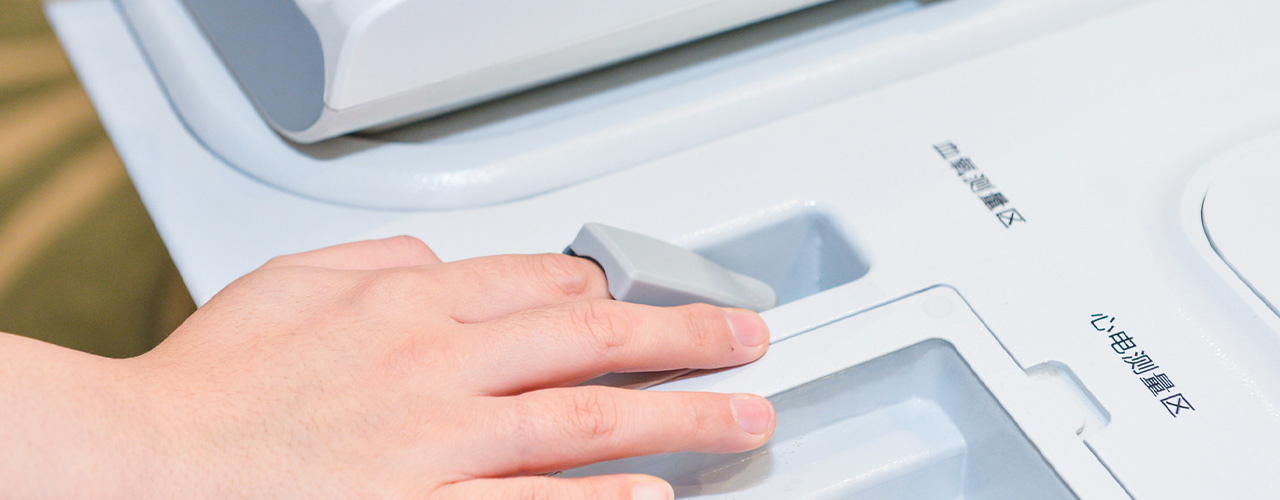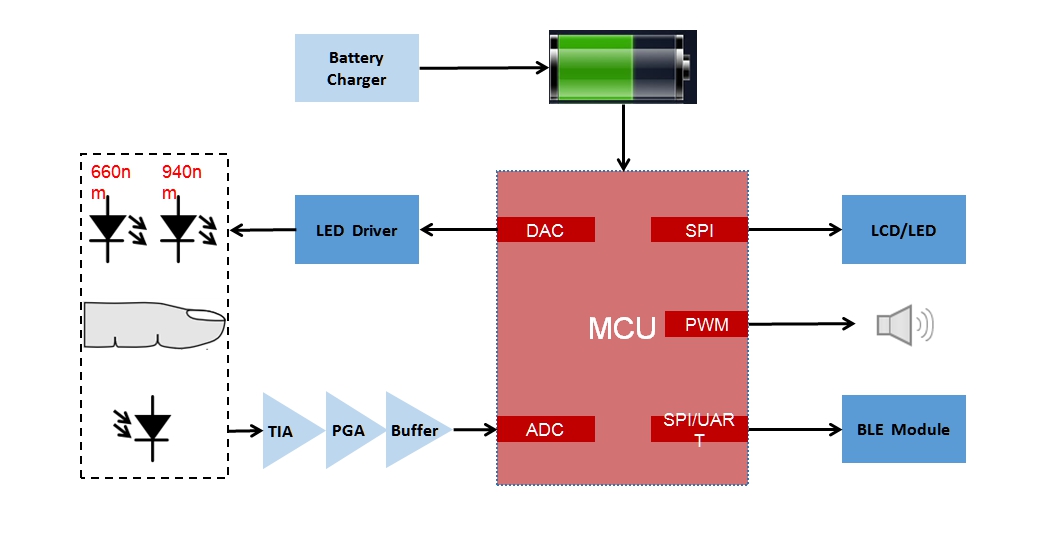Solution Applications
Scenario Images

Solution Overview
The pulse oximeter digitizes signals after filtering and amplifying signals received by the photodiode. The signals are then transmitted to the microprocessor's analog-to-digital converter (ADC) to detect blood oxygen.
An LED and photodiode are placed in a small probe that can be placed against the patient's fingertip or earlobe. The finger acts as a transparent container for hemoglobin, and the 660 nm red light and the 940 nm near-infrared light are used as the incoming light source. Hemoglobin concentration and oxygen saturation are calculated by measuring light transmission intensity. The wireless module serves as a bridge between the MCU and the smart phone, and transmits the data collected by the MCU to the smart phone or other medical devices, enabling data logging and analysis. The dot-matrix LCD is mainly used to display the collected data in real-time.
CS32A060R8T6 has DAC, PWM, 24-bit high-precision ADC, and extensive peripheral interfaces to achieve the functions of pulse oximeters.
Application Block Diagrams







































